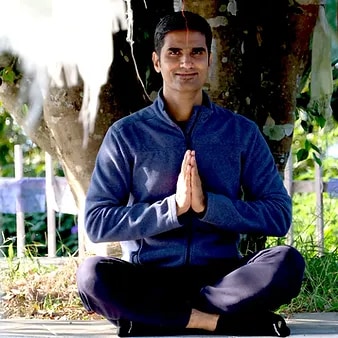Exploring Shatkarma: The Six Purification Techniques of Hatha Yoga
by Hardik Mehta

Shatkarma, also known as Shatkriya, is an essential component of Hatha Yoga that involves six purification techniques designed to cleanse the body and mind. These ancient practices are integral to achieving optimal health and spiritual growth. By purifying the body, practitioners can experience improved energy flow, heightened awareness, and a deeper connection to their inner selves. This comprehensive guide explores the significance, benefits, and methods of each Shatkarma practice.
Understanding Shatkarma: The Foundation of Hatha Yoga
Shatkarma comprises six techniques, each targeting specific areas of the body to eliminate toxins and impurities. These practices are:
- Neti (Nasal Cleansing)
- Dhauti (Cleansing of the Digestive Tract)
- Nauli (Abdominal Massaging)
- Basti (Colon Cleansing)
- Kapalabhati (Skull Shining)
- Trataka (Concentrated Gazing)
1. Neti (Nasal Cleansing)
Neti is a practice aimed at cleansing the nasal passages, ensuring clear breathing and reducing respiratory ailments. It is typically performed using a neti pot filled with warm saline water. The water is poured through one nostril and allowed to flow out of the other, effectively flushing out mucus, allergens, and other impurities.
Benefits of Neti:
- Enhances breathing by clearing nasal passages.
- Reduces symptoms of allergies and sinusitis.
- Improves mental clarity and concentration.
- Dhauti (Cleansing of the Digestive Tract)
Dhauti encompasses several techniques designed to cleanse the digestive tract. The most common form, Vamana Dhauti, involves drinking a large quantity of warm saline water and inducing vomiting to expel toxins from the stomach.
Benefits of Dhauti:
- Detoxifies the digestive system.
- Alleviates digestive disorders such as acidity and indigestion.
- Promotes overall gastrointestinal health.
- Nauli (Abdominal Massaging)
Nauli involves a series of abdominal movements and contractions that massage the internal organs. This practice stimulates the digestive system, enhances metabolism, and strengthens the abdominal muscles.
Benefits of Nauli:
- Improves digestion and elimination.
- Strengthens and tones abdominal muscles.
- Balances the solar plexus chakra, enhancing vitality and willpower.
- Basti (Colon Cleansing)
Basti is a traditional yogic enema technique used to cleanse the colon. This practice can be performed using either water or air to flush out toxins from the large intestine.
Benefits of Basti:
- Detoxifies the colon and promotes digestive health.
- Alleviates constipation and other bowel disorders.
- Enhances the body’s overall detoxification process.
- Kapalabhati (Skull Shining)
Kapalabhati is a breathing technique that involves short, powerful exhales followed by passive inhales. This practice is not only a cleansing technique but also a form of pranayama (breathing exercise).
Benefits of Kapalabhati:
- Cleanses the respiratory system.
- Increases lung capacity and oxygen intake.
- Enhances mental clarity and concentration.
- Trataka (Concentrated Gazing)
Trataka involves focusing the gaze on a single point or object, such as a candle flame, without blinking. This practice strengthens the eyes and enhances concentration and mental stability.
Benefits of Trataka:
- Improves eyesight and eye health.
- Enhances focus and mental clarity.
- Reduces anxiety and mental distractions.
Integrating Shatkarma into Your Daily Routine
Incorporating Shatkarma into your daily routine requires dedication and mindfulness. Here are some tips for safely and effectively practicing these purification techniques:
- Seek Guidance: If you are new to Shatkarma, consider learning from a qualified yoga instructor. Proper guidance ensures that you perform the techniques correctly and safely.
- Start Gradually: Begin with simpler practices like Neti and Kapalabhati before progressing to more advanced techniques like Dhauti and Basti. Gradual progression allows your body to adapt to the cleansing process.
- Listen to Your Body: Pay attention to your body’s responses during and after each practice. If you experience discomfort or adverse effects, stop immediately and consult a healthcare professional.
- Maintain Hygiene: Use clean and sterilized equipment for practices like Neti and Basti to prevent infections. Hygiene is crucial for the effectiveness and safety of these techniques.
- Practice on an Empty Stomach: Perform Shatkarma practices on an empty stomach, preferably in the morning. This enhances the effectiveness of the cleansing process.
The Spiritual Significance of Shatkarma
Beyond the physical benefits, Shatkarma holds profound spiritual significance. These purification techniques prepare the body and mind for deeper practices of yoga and meditation. By removing physical and energetic blockages, practitioners can experience enhanced energy flow, mental clarity, and a deeper connection to their spiritual essence.
Shatkarma is a cornerstone of Hatha Yoga, offering a holistic approach to cleansing the body and mind. By integrating these ancient practices into your daily routine, you can experience profound physical, mental, and spiritual benefits. Whether you are a seasoned yogi or a beginner, exploring the six purification techniques of Shatkarma can lead to a healthier, more balanced, and spiritually enriched life.
In the modern world, where stress and toxins are prevalent, the timeless wisdom of Shatkarma provides a valuable tool for maintaining health and well-being. Embrace the purification path of Shatkarma and discover the transformative power of these ancient yogic practices.
Sayujya Yoga offers a comprehensive 200-hour Teacher Training Course (TTC) in Mumbai, blending traditional and modern concepts with a holistic approach. This program covers essential topics, providing participants with a Yoga diploma and Yoga certificate course in Mumbai. Key areas of focus include the Pranayama course in Mumbai, which teaches advanced breathing techniques, and the Meditation course in Mumbai, enhancing mindfulness and inner peace. Additionally, the Yoga alignment course in Mumbai ensures proper posture and alignment, crucial for effective practice and teaching. Join Sayujya Yoga to deepen your understanding and practice of yoga, gaining valuable credentials in the heart of Mumbai.
About the Author

Hardik Mehta
Hardik is an E-RYT 500 & YACEP (Yoga Alliance Continuing Education Provider), Yoga Alliance, USA. He has been practicing yoga for the last 9 years. Prior to finding his true calling in Yoga, he was working with various corporates for 12 years in the Retail and eCommerce sector.
